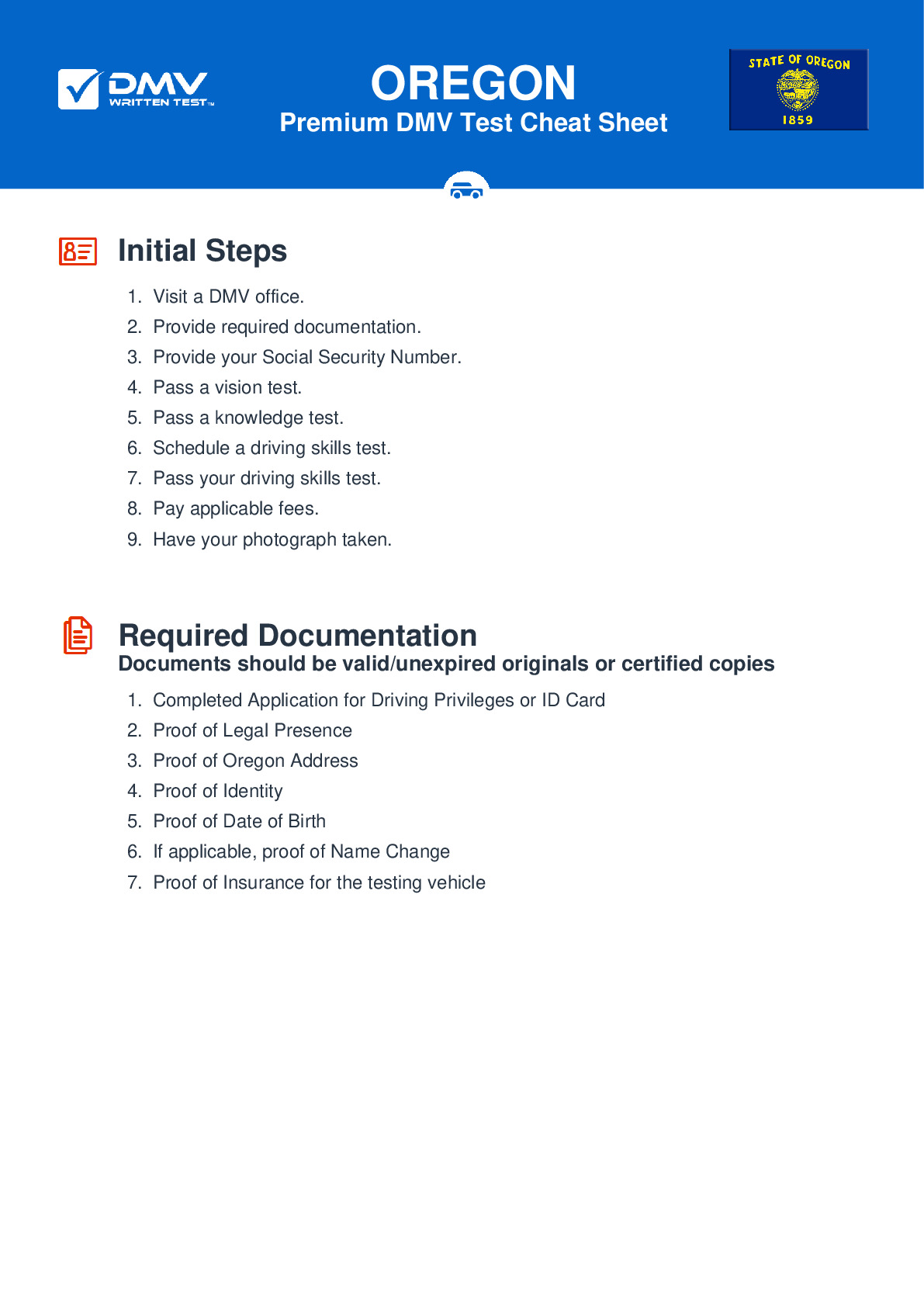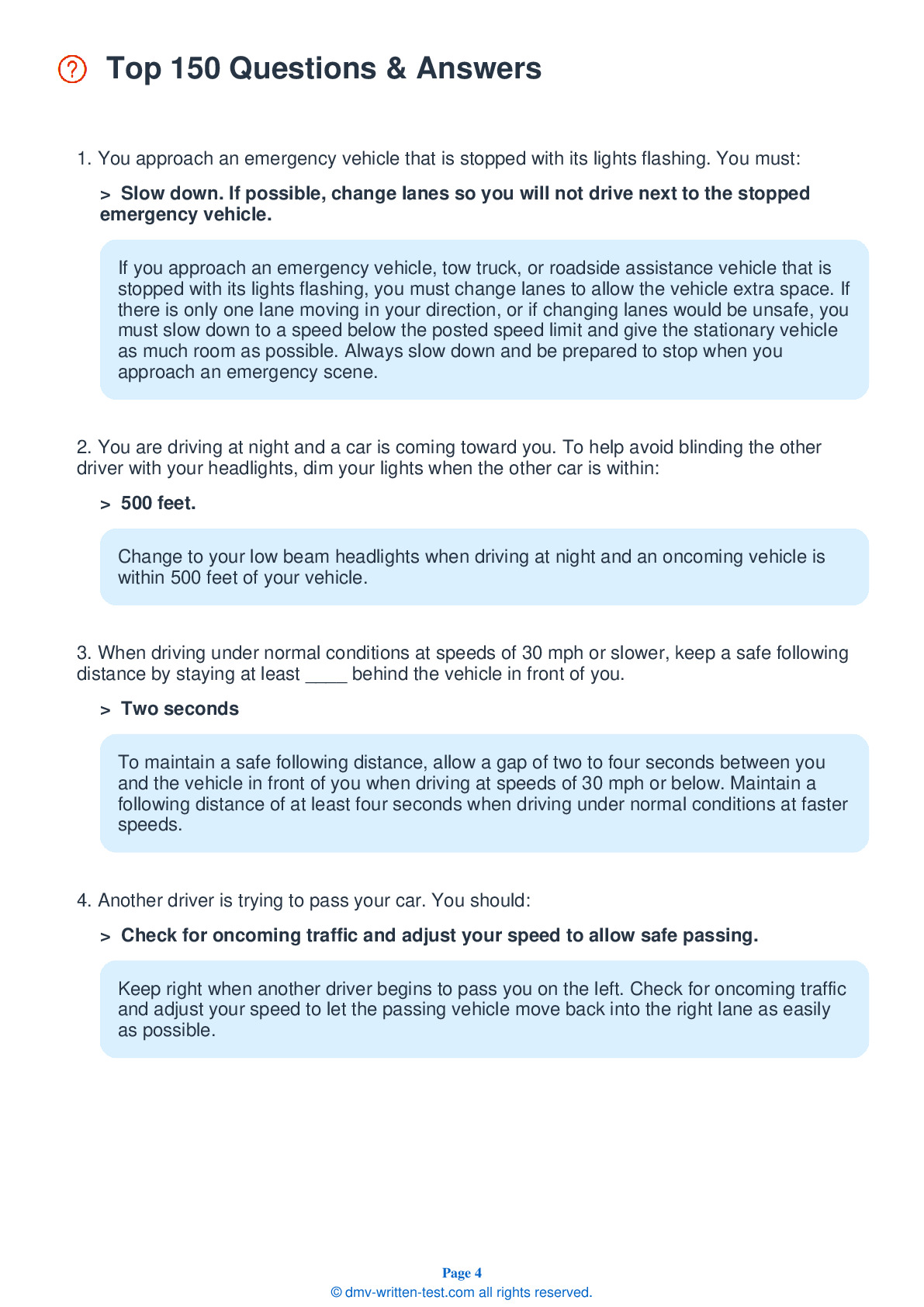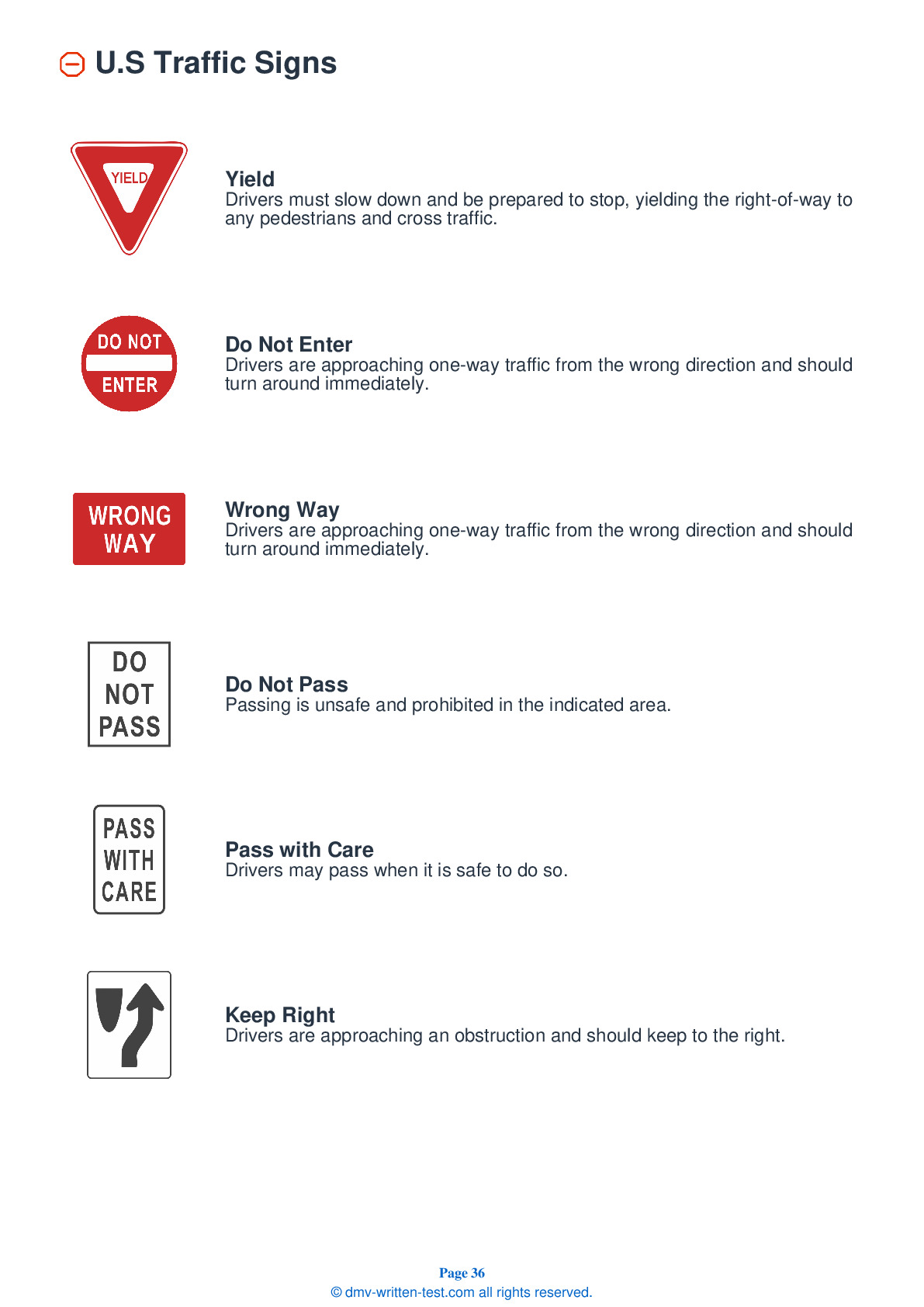2025 Oregon Permit Test 16
The following questions are from real DMV written tests. These are some of the actual permit questions you will face in Oregon. Each permit practice test question has three answer choices. Select one answer for each question and select "grade this section." You can find this button at the bottom of the drivers license quiz. For a complete list of questions and answers for Oregon please visit https://cheat-sheets.dmv-written-test.com/en/oregon/car.
Number of Tests
Number of Question
Passing Score
8. While driving on a two-lane road without bicycle lanes, you encounter a bicyclist traveling in the same direction. What is the safest way to pass the bicyclist?
Explanation
You should pass a bicyclist the same way you would pass any other vehicle, but not so fast or close to them that you throw debris in their face or blow them around with the draft of air from your vehicle. Allow at least 3 feet of space between your side mirror and the bicyclist, or at least 5 feet on higher speed roads or when there is a group of bicyclists. Honking unnecessarily may startle riders and make them more likely to crash.
9. What is a "No zone?"
Explanation
"No zones" are the large blind spots around trucks and other large vehicles. Drivers of smaller vehicles should avoid lingering in "No zones."
10. When you want to make a right turn, your car must be:
Explanation
As you prepare to make a right turn, you should get as far to the right side of the road as possible. Do not cut across lanes of traffic to perform any turn.
11. What should you do when you are going to enter a roadway from a private road?
Explanation
When entering a roadway from a driveway or private road, you must yield the right-of-way to pedestrians and traffic on the roadway.
12. Anything that requires you to ____ could cause you to crash.
Explanation
Anything that causes you to take your attention away from driving, take your eyes off the road, and/or take your hands off the wheel is a distraction.
13. You must not drive your vehicle at a speed greater than:
Explanation
You must not drive at a speed that is faster than is reasonable and prudent. You must drive at a speed that is appropriate for the area where you are driving, the type and condition of surrounding traffic, the presence of pedestrians, the weather, the quality of the road, and light conditions. You must drive within legal speed limits.
14. When getting ready to change lanes, you should:
Explanation




